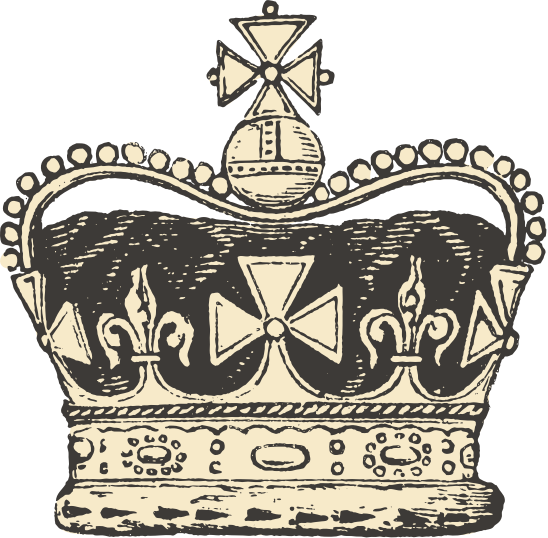Meet the King of the Dinosaurs
A new special exhibition at New York’s American Museum of Natural History dives deep into all things Tyrannosaur. With life-size models, fossils big and small, interactive displays, an animated skeleton, and even a virtual-reality game, “T. Rex: The Ultimate Predator” (open now until August 2020) is like a huge love letter to the most famous, most widely studied dinosaur ever. Here are 13 of the coolest things I learned on a recent visit.
T. rex was one cute baby
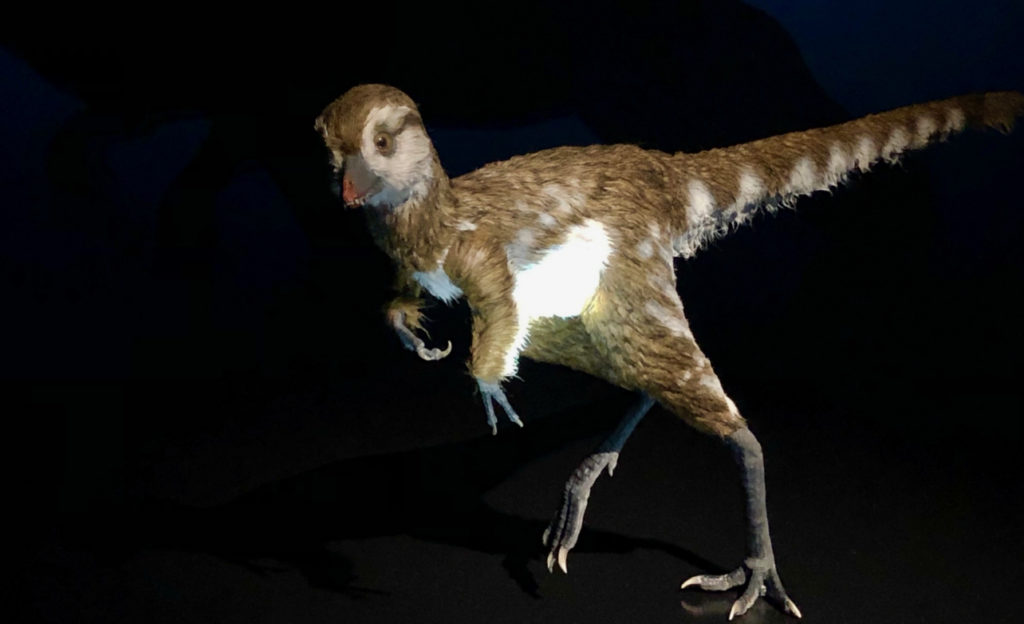
Dawww look at the little thing! T. rex hatchlings were about the size of a small turkey, covered in furry feathers, and looked like little penguin chicken things. But they grew fast—T. rex could take on almost any prey by the age of four. Assuming they lived that long…
T. rex usually died young
Really young. Roughly 60 percent of all Tyrannosaurus rexes died before the age of 1, thanks to disease, accidents, food scarcity, and fights with other predators. And no T. rex yet discovered lived past the age of 28.
The very first Tyrannosaur was hiding in plain sight
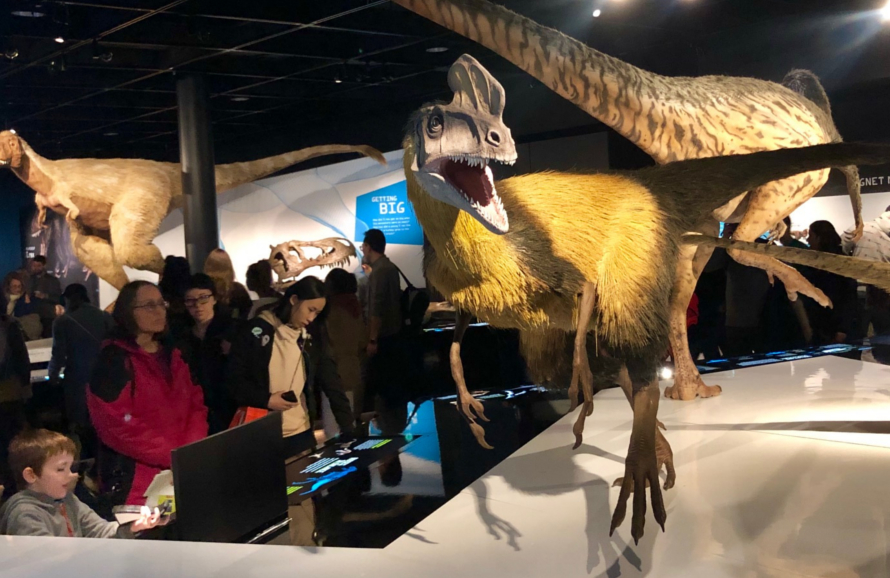
Living 167 million years ago, Proceratosaurus was the earliest species of the Tyrannosaur family. But when it was discovered in 1910, it got lumped in with Ceratosaurus, whose skull had a similar crest. It took 100 years for scientists to realize Proceratosaurus was related to T. rex.
T. rex was a long time in the making
You think 100 years sounds like a long time? Well hold onto your butts: The Tyrannosaur family spent 100 million years evolving into Tyrannosaurus rex, the last and greatest of ’em all. Totally worth the wait! T. rex was also one of the last dinosaurs to emerge before the extinction event that wiped them out, so you could say she went out with a bang.
T. rex had plenty of relatives
The word “Tyrannosaur” refers to all members of the Tyrannosauroidea superfamily. “Tyrannosaurus,” meanwhile, refers specifically to T. rex. More than 22 species of Tyrannosaurs are known to exist, and more are discovered every year. While T. rex was a North American dino, his relatives have been found in South America, Europe, Asia, and Australia.
Ladies can science too
Wow, who knew? When Barnum Brown, the famed fossil hunter, discovered the first T. rex fossils in 1902, he wasn’t alone. His first wife, Marion, helped him search for fossils—they spent their honeymoon in the field—even though women weren’t “supposed” to do so in the early 1900s. Barnum ignored that nonsense, noting that Marion’s training as a biologist was an asset to his mission.
T. rex had three fingers?
Nope, but scientists thought he did for a long time. That’s why T. rex was displayed in museums with three fingers for decades, until the extra digits were eventually removed. You can see the faux fingers from the Museum of Natural History’s T. rex on display in the exhibition.
T. rex had killer eyesight
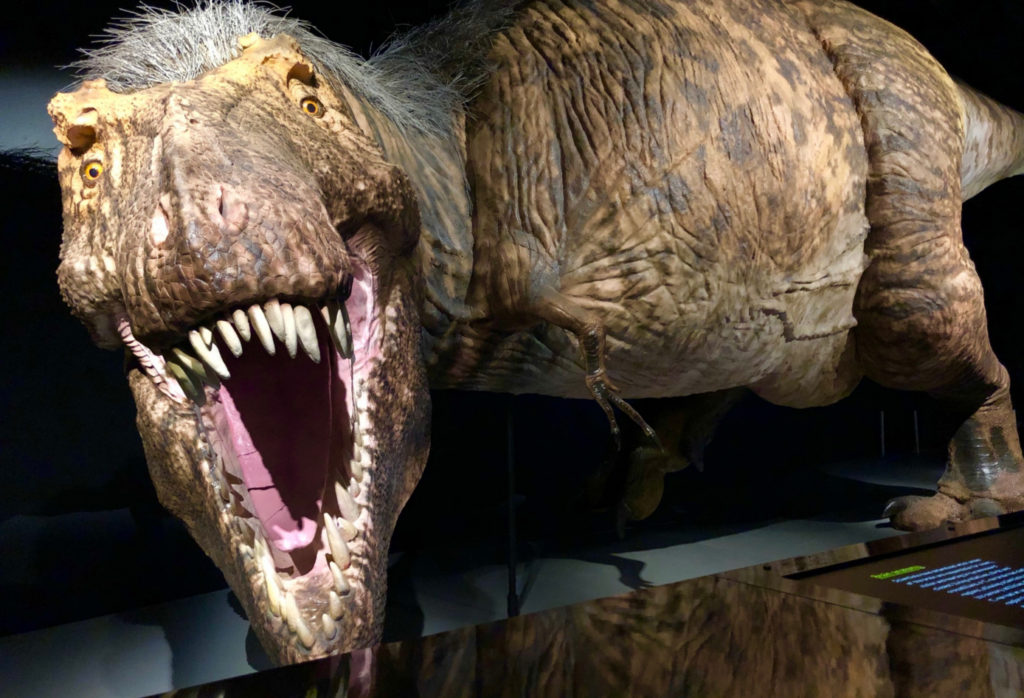
It’s no secret that Jurassic Park took some…liberties…with dinosaur science. The movie’s worst sin was convincing us all that T. rex couldn’t see for crap. In fact, she had excellent vision, with two front-facing eyes (instead of one on either side of her head), fabulous depth perception, and likely the ability to see all the colors we see. Heck, scientists are pretty sure that, like birds, T. rex could also see into the ultraviolet range of the color spectrum—a range invisible to humans.
She also had jaws of steel
T. rex could bite for the force of 7,800 pounds. That’s equivalent to the weight of three cars. So being bitten by a T. rex was like being crushed under three sedans with very pointy teeth. No other known animal in the history of the planet has ever had a bite that strong.
T. rex was a brainiac
Backing up that brawn was a big ol’ brain. Scientists know that, in part, because they’re able to map the brain based on the space it once occupied in the skull. All that brain power ramped up T. rex’s senses (and her effectiveness as a hunter): In addition to her great eyesight, she had good hearing and an unusually strong sense of smell.
T. rex had feathers
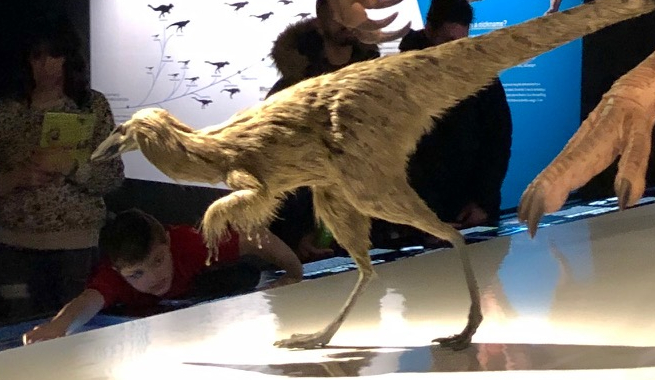
Beyond being fuzzy when they hatched, T. rex almost certainly had at least some feathers throughout its lifespan. You can see a feathery head and neck on the exhibition’s terrifyingly huge model of an adult T. rex. Dilong, a Tyrannosaur from 126 million years ago, was the first to be found with fossilized feathers covering its body.
But also…horns?!
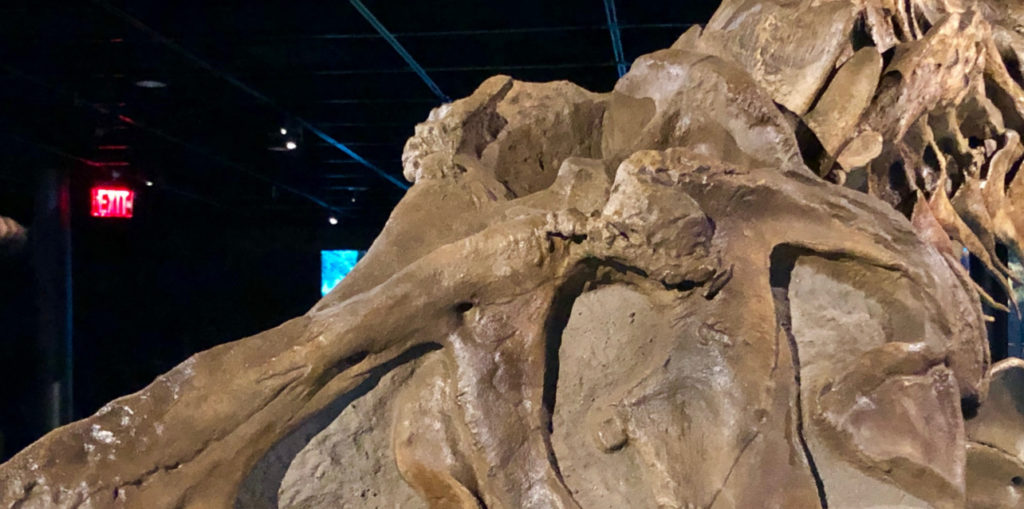
In maybe the weirdest departure from what we usually think a T. rex looks like, scientists are pretty sure she had horns. Or maybe a showy head crest, like Proceratosaurus had. Tyrannosaur skulls often have rough surfaces around the eyes and snout, suggesting something used to be attached there. Feathers are one thing, but I’m trying to picture T. rex with, like, ram’s horns or deer’s antlers—and it’s freakin’ me out!
T. rex makes adults act like children
Being surrounded by facts, fossils, and fans of the most popular dinosaur is a joyful experience. And this exhibition tickles the fancy of more than just children. I saw fully grown adults imitating T. rex’s stubby arms and lumbering gait. I saw a guy in a suit squat down to imitate a T. rex mom laying an egg. I swear I heard someone roar like a Tyrannosaur. T. rex might be the star of the show, but the happiness she brings her audience is part of why we love museums so much.
